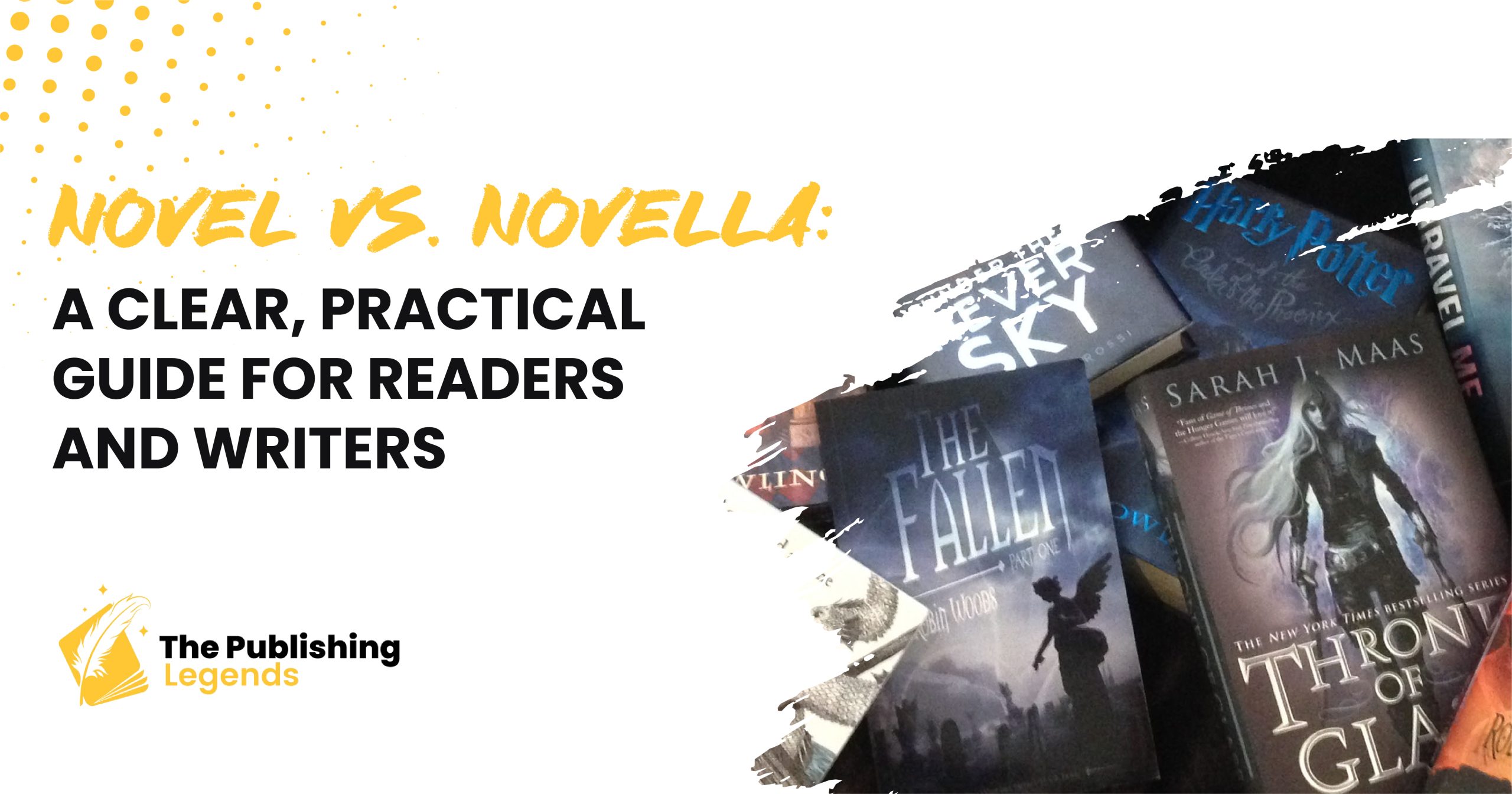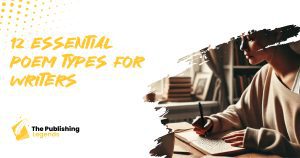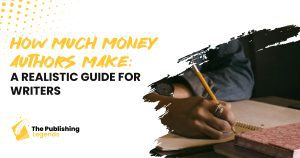Fiction takes several forms. Some of the most lasting are the novel and the novella. They are both narrative. But they act in different substances. Understanding the disparities will enable you to make the best decisions. It also aids you in scheduling as a writer. The Publishing Legends guide informs the reader on the way the forms differ (The Publishing Legends).
What is a novel?
A long narrative prose fiction is called a novel. It has a breadth and depth. The average length of novels is between fifty thousand and a hundred thousand words. The shape is compatible with several arcs. A novel can linger. It could go round and round a theme. It is able to follow side stories and yet come back to a sturdy spine.
What is a novella?
A novella is between a short story and a novel. A majority of them range between twenty and fifty thousand words. All the scenes should be important. A novella tends to have a central question. It has a number of subplots that do not often exceed one or two. The ensemble is tight. The influence may be pungent, immediate, and impactful.
Length, scope, and narrative scale
The length does not merely represent a number. It influences the type of story that you are going to tell. A new length, and you will be able to weave in plots. You may allow tension to be built up gradually. At novella length, you have to tighten. You give up panorama in favor of focus. Such pressure alienates clear-headedness. The rhythm makes the reader count every beat since the beats fall nearer to each other.
Plot and pacing differences
Complex structures may be supported by novels. One can run parallel lines. You may then change perspective and time. It allows you to plant questions that will flower long after. Tone and mood may be developed too by use of slow chapters. Shocks can be given in fast chapters. The speed is elastic. Novellas call a purer line. You choose a beginning, a motivation and an end. Chapters go into a rigid chain. The arc progresses on each page. The technique is momentum. The read is somewhat a breath held.
Character development at two sizes
Novels hold large casts. They allow slow burn change. Relationships can fracture and mend. Side characters can arc in full. You can explore contradictions and cost. You can show work, home, and history. Novellas keep the lens close. The hero often owns the frame. A small circle supports the hero’s turn. Growth must show fast. Dialogue does heavy lifting. Actions speak more than backstory. The result can feel intimate and direct.
Want help figuring out if your story is a novel or a novella? Our book coaching services guide writers in choosing the right format and structure for their narrative goals.
Worldbuilding and setting detail
Novels can paint wide maps. They can track seasons and politics. They can detail craft, law, trade, and lore. A reader can live inside that building. Novellas must hint. They suggest rather than list. A single image may carry a city. A rule may be shown once and never explained. Readers supply the rest. This is not a flaw. A suggestion can spark imagination. The trick is restraint with precision.
Themes, tone, and emotional range
Novels can host many themes. Justice, love, power, memory, and loss can weave in layers. Tone can shift as arcs collide. Irony can sit beside sincerity. A novella often chooses one theme and drills down. Tone is steadier. The piece feels like a focused beam. That focus can hit hard. It can leave a clean afterglow. The choice depends on intent. Do you want breadth or intensity? Do you want a tapestry or a blade?
Structure and point of view
A novel can carry multiple points of view. It can be split into parts and books. Framed narratives and epistolary sections fit well. A novella usually stays closer. First person or tight third is common. The structure often follows a straight line. Framing is possible, but it must earn its keep. Extra scaffolding risks bloat. The best novellas feel inevitable from the first line to the last.
Reader experience and time cost
A novel asks for days or weeks. It offers the company over time. It can become a season of your life. You grow with it. You pause and return. A novella fits a weekend or a flight. It gives closure fast. It can cleanse the palate between longer reads. Both can be profound. The difference is cadence. Choose the pace that suits your week, your headspace, and your goals.
Market norms and publishing routes
Traditional publishing favors novels. Shelves, award lists, and store displays are built for them. Price points align with print costs. Publicity cycles expect that size. Novellas used to struggle in print. Digital storefronts changed that math. E-books and subscriptions made short work viable. Audio also helped. A three-hour listen suits commutes. Small presses and self-publishers embraced the gap. The result is a vibrant mid-length market.
Need help with character arcs, worldbuilding, or structure? Get support from our expert fiction ghostwriters who bring clarity and depth to stories of any length.
Editing and craft considerations
Novels require endurance. Draft control is hard. You manage many moving pieces. Continuity can slip. Pacing can sag. Revision takes months. Novellas require precision. A loose scene shows at once. A weak line rattles the frame. Drafts move faster, but each cut matters more. For both forms, planning saves pain. Outlines help, even if you write by discovery. Clear stakes and turns keep readers engaged.
Genre patterns and expectations
Each genre uses length differently. Epic fantasy loves long novels. Space opera too. Mystery can flex, but series tend to novel length. Romance thrives across lengths. Thrillers often sit in the middle but lean long for series arcs. Horror welcomes novellas. So does science fiction when it tests one idea. Literary fiction spans both with ease. Know your shelf. Meet core expectations, then bend them with intent.
Pricing, packaging, and discoverability
Novels command higher prices. They justify hardcover and deluxe editions. They attract book club picks and long reviews. Novellas work well as ebooks, bundles, and special prints. They slot into anthologies. They pair with a novel in the same world. Covers should signal scale. Taglines should set scope. Clear positioning avoids disappointment. Readers like surprise in story, not in size.
Examples that illuminate the split
Think of sprawling family sagas. They thrive as novels. Many threads tangle across decades. Think of a single moral test under pressure. That sings as a novella. Consider Animal Farm. Its punch comes from focus. Consider Jane Eyre. Its power grows from a long interior journey. Neither form is lesser. Each does different work. Choose the tool that fits the job.
Common misconceptions to avoid
People sometimes treat novellas as drafts. They are not. They are finished art in a shorter frame. Others think novels must be long to be serious. Not true. Many tight novels hit harder than doorstops. Another myth says readers will not pay for shorter work. They will, if value is clear. Time is scarce. A perfect two hour read can feel priceless.
How writers can choose wisely
Start with the core engine. How many turns does it need? How much context must the reader hold to care? If the answer grows and branches, think novel. If the answer is clean and fierce, think novella. Draft a one page outline. If subplots crowd in, scale up. If summary reads like a short film, scale down. Let length serve story, not ego.
Ready to publish your novel or novella? Partner with The Publishing Legends for complete publishing support—from formatting and design to global distribution.
Practical drafting tips for both forms
Use short chapters to control pace. End scenes on a question or shift. Track threads with a simple map. Note where each character changes. In revision, cut anything that repeats a point. Replace summary with action when possible. Read aloud for rhythm. Short sentences help clarity. Variety keeps music. For a novella, test if any scene can merge. For a novel, test if any line can carry more weight.
Reader guidance for better choices
Ask what you seek this week. Do you want to live in a world for a while? Pick a novel. Do you want a full arc fast? Pick a novella. Sampling helps. Read the first two pages. If the voice pulls you, length will not matter. If the voice stumbles, even a short read will feel long. Trust the pull. Your reading life should fit your life, not fight it.
Audiobooks, serialization, and format
Audio highlights length differences. A novel can run ten to twenty hours. A novella may wrap in three. Some platforms serialize both. Weekly drops mimic classic magazine runs. That model suits novellas well. It also helps novels with many parts. Format choices can revive old work. A tight novella as a premium audio can build new fans. A novel can anchor a series in many media.
IP strategy and career planning
For authors, length is a lever. A novel can launch a flagship. A novella can bridge gaps between releases. It can test a market or explore a side character. Bundles can grow value. Rights can stack. Film and game teams like clear cores. A novella can serve as a perfect proof of concept. A novel can deliver the full franchise.
Ethics, accessibility, and inclusion
Long books can gate access. Not everyone has time, energy, or funds for big volumes. Shorter forms widen the door. They invite more readers in. They also help new writers enter the field. Price, length, and format can shape who reads. Keep that in mind. The goal is reach with respect.
Final guidance from The Publishing Legends
Both forms matter. The novel offers breadth and time. The novella offers focus and force. Pick the form that serves the heart of your idea. Then commit. Design the experience with care. Keep sentences clean. Keep scenes purposeful. Respect your reader’s time. If you do that, length becomes a feature, not a hurdle. Your story will find its right shape, and your audience will feel it.
Still not sure which format to choose? Let our team help you shape and launch your story. Explore our publishing and editing services today.




